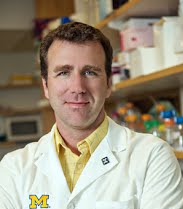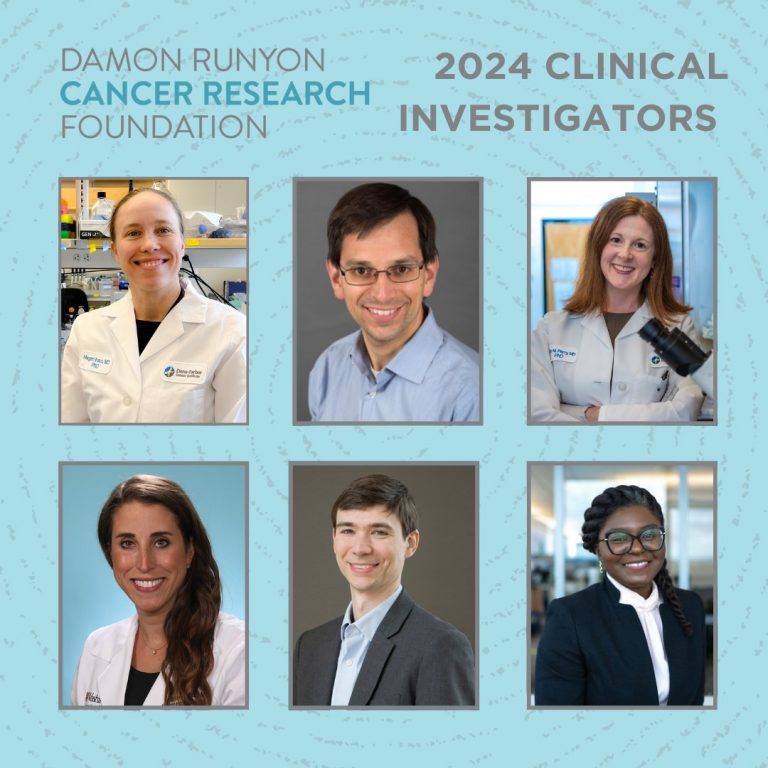Rare disease collaboration receives NIH funding for a new Center for Fragile X disease
An interview with Peter Todd, M.D, Ph.D., Neurology, Medical School, University of Michigan (U-M), and member of the Executive Committee of the U-M Center for RNA Biomedicine
 Dr. Todd will serve as co-director of a Fragile X Center without walls with investigators at U-M, Baylor College of Medicine, and Emory University. This Fragile X Center is one of three recently funded by National Institutes of Health (NIH). Fragile X syndrome is the most common inherited form of intellectual and developmental disability (IDD), and the repeat that causes Fragile X Syndrome can also result in neurodegeneration and premature ovarian failure. The center will receive $9 million over the next 5 years.
Dr. Todd will serve as co-director of a Fragile X Center without walls with investigators at U-M, Baylor College of Medicine, and Emory University. This Fragile X Center is one of three recently funded by National Institutes of Health (NIH). Fragile X syndrome is the most common inherited form of intellectual and developmental disability (IDD), and the repeat that causes Fragile X Syndrome can also result in neurodegeneration and premature ovarian failure. The center will receive $9 million over the next 5 years.
“Rare diseases” are not rare
First off, rare diseases are not rare in aggregate- one in 10 (~30 Million) people in the US will suffer from a rare disease. Second, in many of these rare diseases, we have been able to define their genetic basis, and that has allowed us to model them effectively. This has led to targeted and effective therapies for a number of previously untreatable rare conditions.
How is RNA playing a central role in these diseases?
RNA is playing two roles. First, the types of diseases that I study are caused by repeating sequences within the DNA that get transcribed into RNA. There is good evidence that the repeat mutations as RNA can directly contribute to and cause human diseases through a number of mechanisms involving the proteins with which they interact, and the translation of the mRNAs in which they reside. Thus, a knowledge of RNA biology is directly informing our understanding of disease biology and the development of therapeutic strategies. Second, for many rare diseases, including the ones my lab studies, RNAs are now being used as drugs to try and treat these conditions. These RNA drugs are able to enhance or suppress the expression of key factors that influence the disease state.
For example, in our most recent work that served as a basis for our Fragile X Center grant, we teamed up with Ionis Pharmaceuticals to develop Antisense Oligonucleotides (ASOs, a type of RNA drug) that can bind to the Fragile X RNA which contains a large repeat. When this ASO binds to the mRNA, in prevents production of a toxic protein from the repeats while promoting translation of a second functional protein from the same mRNA that is lost in the disease states. To figure this out, we had to understand both the biology of the Repeat RNA and how we could use an RNA drug to target that aberrant biology.
How can we apply the knowledge gained from rare diseases to other diseases?
We have learned an immense amount from rare diseases that has subsequently led to new ideas and therapies in more common conditions. A perfect example is the development of ASOs for Spinal Muscular Atrophy, a rare form of pediatric ALS. This process of discovery and advancement of ASOs in this disease established that these kinds of drugs can be effective in a human condition and provided a platform for targeting key molecules in other diseases that are relevant to common conditions like Alzheimer’s and ALS. Those trials are now underway and offer great hope for these currently untreatable conditions.
Why are collaborations allowing such scientific discoveries?
Good collaborations bring together scientists with different backgrounds, skillsets and assumptions. What one scientist might take as something everyone knows, the other will view as new- and can therefore see the potential of that new-ness with greater insight. As an example, I have a long-standing collaboration with two bioinformatics scientists. They are incredibly good at analyzing data and figuring out how and what data they can use to study a given question, but they often lack insight into the key biological questions that their data might inform. In contrast, I am unable to fathom coding and analyzing the millions of genomes that are involved. By combining my questions and biological insights —and abilities to biologically validate findings in model systems— with their ability to address these questions in large datasets using novel algorithms, we are able to accomplish things none of us alone would be able to figure out.
What motivated the creation of the Fragile X Center? What are the expectations?
This center emerged from a collaboration and collegial relationships with investigators at other centers that have developed over years. My co-director, David Nelson at Baylor College of Medicine, was directly involved in the discovery of the Fragile X gene 30 years ago. When I entered the field just over a decade ago, he was very supportive of my research rather than attempting to compete with us in what we were pursuing. The third group in the center, based in Emory University, shared unpublished data with us and when pooled with our own unpublished findings, we found an interesting new direction for our research to move that was mutually beneficial to both groups.
The hope and expectation for the center is that by maintaining open communications and leaning into our diverse skillsets, our three groups can together make a bigger impact on the field than we might do separately, which will hopefully bridge us from new ideas to new therapies in patients.
What is your personal motivation for this research?
My motivations derive from the patients I see in clinic who are dealing with these untreatable conditions. It is a very hard thing to face a disease without a cure and without a lot of hope. Finding ways to give these families and patients hope is a great motivator and working with those families directly towards these goals is one of my favorite activities.
I am also fascinated by neuroscience and biology. There is still so much we do not understand about the basic biology of our brain cells and genes, and I embrace the pursuit of new knowledge for its own sake. By combining cool biological questions with the study of diseases with which I have a personal interest from my patients, I think I have the best possible career in the world.
About the new Fragile X Center
I am honored to be part of this new Fragile X Center and to bring the resources that it promises to the University of Michigan, the Department of Neurology and to the Center for RNA Biomedicine. This is truly the culmination of a lot of work by a lot of people at Michigan and beyond over many years.
Thank you especially to my co-directors of the UM Fragile X Clinic Jeff Innis and Donna Martin, to my collaborators Mike Sutton, Hank Paulson, Sami Barmada and Hayley McGlauglin, and to the hard-working members of the Todd lab both past and present.
Lastly, a special thank you to the Fragile X Community here in Michigan, the Fragile X Association of Michigan, and private philanthropic donors within the broader Fragile X community across the country who have generously supported our laboratory and our efforts in this area with both money and time over the past decade. This Center award is theirs as much as it is ours and I hope we can celebrate it and use it optimally together.



